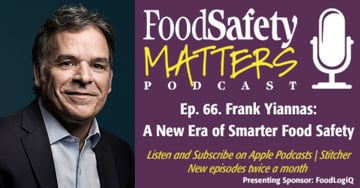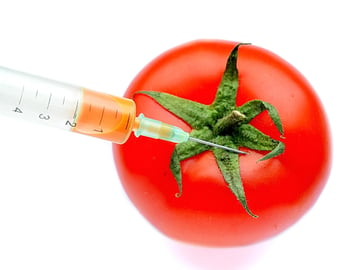Food fraud is on the rise due in part to a complex and fragmented global food supply chain. Learn about the factors that contribute to food adulteration and what the industry can do to implement safeguards against bad actors.
Consumers have become leery of where their food comes from and the kinds of raw materials they may be exposed to. With recurring news coverage of fraud or negligence within the supply chain, blind trust in food brands is at an all time low. A recent article in the Triangle Business Journal tells the story of a North Carolina-based seafood company being hit with a $500,000 fine for falsely labeling millions of dollars worth of crab meat as being a “Product of the USA.”
Investigators found that some of the company's meat originated from Asia and South America, and in some cases, the meat wasn’t actually blue crab at all. When the company was unable to meet consumer demand for the product, the owner allegedly instructed his employees to repackage the imported crab meat as an item produced in the United States. Sentencing for the crime is scheduled for January 2020.
Food fraud, adulteration and tainted ingredients are nothing new. In 2016, at least 33 people, including five children, died in Pakistan after eating a purposefully poisoned baked confection called ‘laddu.’ In 2008, six infants died and more than 300,000 babies became ill due to baby formula that was contaminated with melamine. Despite the increase in food safety regulations, the frequency of food fraud, adulterated products, and contaminated ingredients continue to slip through the cracks of our global food safety system, sickening an estimated 600 million people each year and costing the global food economy between $10 and $15 billion a year. These types of scandals can destroy a food company’s brand and make it impossible for them to recover financially as they deal with the aftermath.
What is Food Adulteration?
Food adulteration — which is a form of food fraud — is the act of intentionally debasing the quality of food offered for sale either by the mixture or substitution of inferior substances or by the removal of some valuable ingredients. Other acts of food fraud include tampering, theft, simulation and counterfeiting.
Adulterated food is food that meets any of these four criteria:
- Contains a poisonous or deleterious substance: For example, if a batch of Brie cheese is found to contain Listeria, it’s considered adulterated. The only exemptions are if the adulteration is naturally occurring, or if levels are so low they don’t pose a threat to public health
- Contains an added poisonous or added deleterious substance: The same restrictions apply here.
- Exists in a container that is composed, in part or in whole, of a poisonous or deleterious substance: This may be intentional or unintentional.
- Bears any chemical or pesticide residue that is unsafe: Any chemicals or pesticides that are safe for human contact and/or consumption are not considered adulterated.
So why do food adulteration incidents continue to occur, when food companies are subject to stricter audits and certifications, new government regulations, and more severe sanctions for violations? Unfortunately, none of these motivators for compliance are enough to detect or prevent food fraud before affected products end up in the hands of consumers.
There are three key factors that contribute to the problem of adulteration: consumer demand, globalization, and money. America’s demand for imported foods has more than tripled in the last few years. Importers and producers are meeting our country’s appetite for global foods by sending more than $120 billion in products to the U.S. each year; that equals a whopping 15 percent of the U.S. food supply. These lucrative business relationships have stretched the global supply chain to its limit.
Addressing Food Fraud
The most effective way to eliminate illegal practices in the food sector is food chain transparency and full raw material traceability. Food companies that implement a digital traceability system using unique product identifiers have comprehensive supply chain visibility in real-time. This is the foundation for quality supply chain data and a critical step in monitoring what is happening at each point along the product journey. Should a food adulteration incident occur, brands that are armed with this information can be proactive, taking swift action to help protect consumers.
Companies that are worried about food adulteration in their food supply chain should adopt tools to prepare them for an incident. Products like FoodLogiQ Connect can help suppliers connect with one another, and establish checks and balances to ensure all partners are adhering to safety standards. FoodLogiQ's Track + Trace gives brands the ability to track food products with true farm-to-fork accuracy. Pinpoint exactly where adulterated food has gone into the supply chain, and remove it with precision. Learn more about how you can get started here.
Tag(s):
Food Safety
Other posts you might be interested in
View All Posts
Food Industry
3 min read
| February 26, 2020
Frank Yiannas: A New Era of Smarter Food Safety
Read More
Recall
5 min read
| July 13, 2018
Food Recall Management: How Food Recalls Affect Consumer Buying Habits and What You Can Do About It
Read More
Food Industry
6 min read
| September 20, 2018

